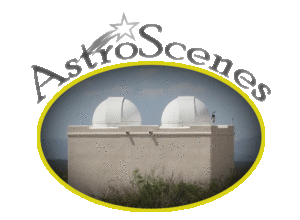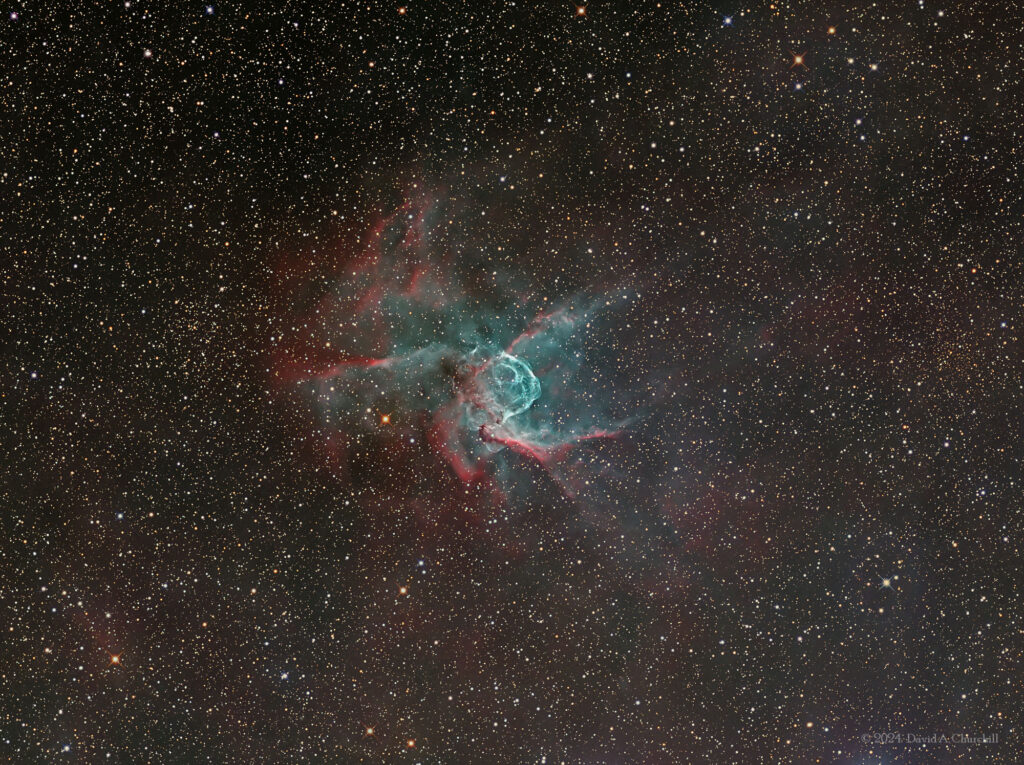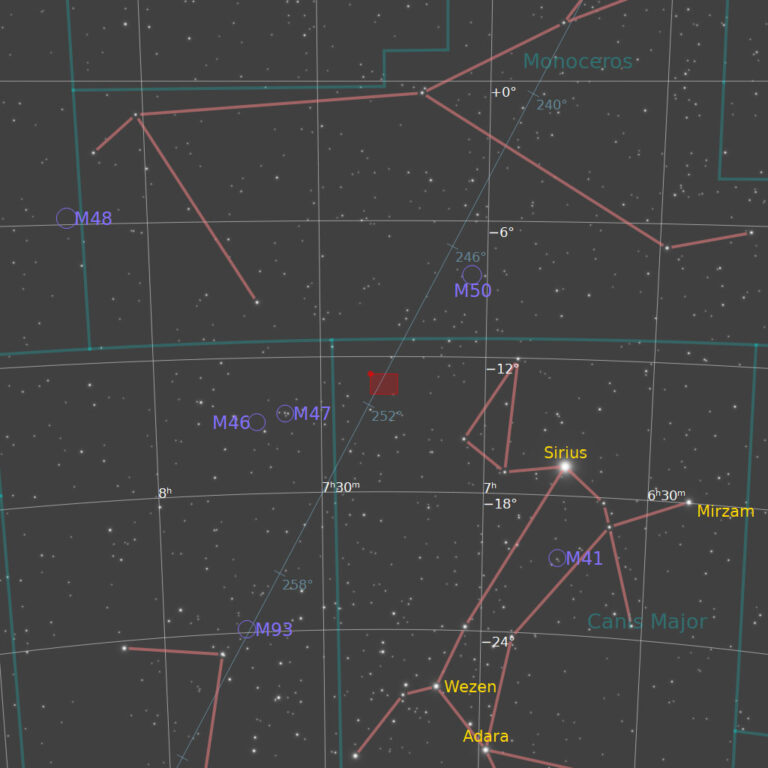NGC 2359
Thor's Helmet. Emission Nebula, Canis Major
December 2024. Cave Creek Canyon Observatory, Arizona Sky Village
- Description
- Technical
- Links
NGC 2359 (also known as Thor’s Helmet, Sharpless 2-298 and Gum 4) is an emission nebula in the constellation Canis Major. The nebula is approximately 3,670 parsecs (11.96 thousand light years) away and 30 light-years in size. The central star is the Wolf-Rayet star WR7, an extremely hot star thought to be in a brief pre-supernova stage of evolution. It is similar in nature to the Bubble Nebula, but interactions with a nearby large molecular cloud are thought to have contributed to the more complex shape and curved bow-shock structure of Thor’s Helmet.
The nebula has an overall bubble shape, but with complex filamentary structures. The nebula contains several hundred solar masses of ionized material, plus several thousand more of unionized gas. It is largely interstellar material swept up by winds from the central star, although some material does appear to be enriched with the products of fusion and is likely to come directly from the star. The expansion rate of different portions of the nebula varies from 10 km/s to at least 30 km/s, leading to age estimates of 78,500 – 236,000 years. The nebula has been studied at radio and x-ray wavelengths, but it is still unclear whether it was produced at the class O main sequence stage of development, as a red supergiant, luminous blue variable, or mainly as a Wolf-Rayet star.
NGC 2361 is a bright knot of nebulosity on one edge of the central ring of NGC 2359.
The nebula has an overall bubble shape, but with complex filamentary structures. The nebula contains several hundred solar masses of ionized material, plus several thousand more of unionized gas. It is largely interstellar material swept up by winds from the central star, although some material does appear to be enriched with the products of fusion and is likely to come directly from the star. The expansion rate of different portions of the nebula varies from 10 km/s to at least 30 km/s, leading to age estimates of 78,500 – 236,000 years. The nebula has been studied at radio and x-ray wavelengths, but it is still unclear whether it was produced at the class O main sequence stage of development, as a red supergiant, luminous blue variable, or mainly as a Wolf-Rayet star.
NGC 2361 is a bright knot of nebulosity on one edge of the central ring of NGC 2359.
Telescope: Planewave Delta Rho 350 f3.0
Mount: Astro Physics 3600GTO “El Capitan”
Camera: ZWO ASI461MM pro / EFW-7
Guider: ZWO OAG-L-68 / ZWO ASI174mm Mini
Filters: Astrodon II 50mm Sq LRGB
L: 46×5 mins = 230 mins, R: 39×5 mins = 195 mins, G: 30×5 mins = 150 mins, B: 44×5 mins = 220 mins
Total Imaging Time: 13h 15m
Data Imaged remotely on 11 nights during January & March 2023, plus November & December 2024.
Data acquisition & Processing by David Churchill.
None


